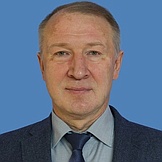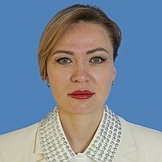Regional flags and emblems


PROFILE
Established –30 September 2022
Capital – Donetsk
Geography and climate
The Donetsk People’s Republic is located in the steppe zone in the south of the European part of Russia.
It borders the Sea of Azov in the south. Its terrain is mostly flat (with hills up to 200 metres high), cut by ravines and gullies. The 367-metre-high Donets Ridge in the northeast is dissected by numerous rivers. There are over 11,000 rivers in the republic. The biggest one is the Seversky Donets River with its tributaries.
The republic is rich in minerals, primarily coal (the Donets Coalfield) and has considerable reserves of rock salt. It also has deposits of dolomites, limestone, clay and mercury, as well as iron and aluminium ore.
The climate of the republic is temperate continental. The average January temperature is −7.2°C, and the average July temperature is 24.5°C. The average annual precipitation is about 500 mm. The flora is mostly steppe. There are small forests (pine and oak trees) in the Seversky Donets Valley. The soil is mostly chernozem (black soil).
Government
The status of the Donetsk People’s Republic shall be determined by the Agreement signed between the Russian Federation and the Donetsk People’s Republic on the Accession of the Donetsk People’s Republic to the Russian Federation and the Establishment of a New Constituent Entity of the Russian Federation; the Constitution of the Russian Federation; the Federal Constitutional Law No. 5-FKZ 'On the Accession of the Donetsk People’s Republic to the Russian Federation and the Establishment of a New Constituent Entity of the Russian Federation', dated 4 October 2022; and by the Constitution of the Donetsk People’s Republic.
Legislative power of the DPR is exercised by the People's Council of the Donetsk People's Republic, which is the permanent representative and only body of legislative authority in the Donetsk People's Republic.
The People's Council of the Donetsk People's Republic has 90 deputies elected for five years, running in the single republican electoral district in proportion to the number of votes cast for lists of candidates. The current People’s Council of the Donetsk People's Republic was elected in September 2023. Its term expires in September 2028.
The executive branch of the DPR is represented by the Head of the Donetsk People’s Republic, the Government of the Donetsk People’s Republic, and other bodies of executive authority of the republic.
The Government of the Donetsk People’s Republic is the permanent supreme executive authority (supreme executive body) in the DPR.
The Head of the Donetsk People’s Republic is the republic’s highest-ranking official, who exercises executive power and constitutes the Government of the Donetsk People’s Republic. He is elected for five years by the deputies of the People's Council of the Donetsk People's Republic. The term of office of the current incumbent expires in September 2028.
Economy and natural resources
The leading industries in the DPR are the metals industry, the mining of coal and raw materials for the metals industry, chemical and coke chemical production, and mining engineering.
The republic’s main companies are the Donetsk Metallurgical Plant, Yenakievo Iron and Steel Works, the Yasinovsky Coke Chemical Plant, the Zuevskaya Thermal Power Plant, the Khartsyzk Pipe Plant, and over 100 coal mines.
The republic has a developed agricultural sector. Crop production focuses on farming wheat, barley, maize, sunflowers, vegetables and fruit. Livestock breeding is primarily based on the production of pork and poultry meat.



